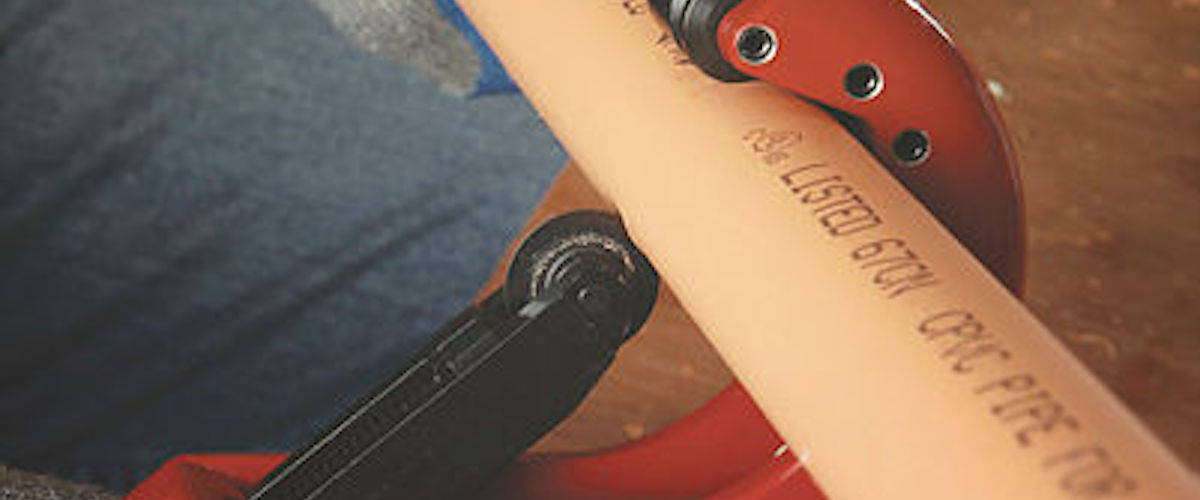How to Properly Cut BlazeMaster® CPVC Pipe for Fire Protection Systems
A simple cut-and-join process is one of the many advantages of BlazeMaster® Fire Protection Systems. By following a few simple steps, installers can cut CPVC piping to the desired length in just a few minutes and ensure a clean, straight edge every time.
To prevent bodily harm, installers should wear protective gloves and safety goggles, and check the manufacturer’s installation guidelines for safety precautions.
CPVC Cutting Tools
CPVC pipe can be easily cut using simple hand tools―no electricity or heat is required.
For best results: BlazeMaster Fire Protection Systems recommends using either a wheel cutter or a fine-toothed saw. If using a fine-toothed saw, make sure it has a blade with 16 to 18 teeth per inch (6 to 7 per centimeter), and a maximum .025 inch (.064 centimeter) offset.
Always cut CPVC pipe square in order to maximize the surface area for solvent welding. Miter boxes and other guide devices are strongly recommended to ensure square cuts.
In temperatures above 50°F (10°C), installers may also use ratchet cutters with sharpened blades. Cutting with dull blades or in cold weather can compress and damage the pipe.
Circular power saws can also be used. Make sure it runs at 6,000 rpm. Band saws that run at 3,600 feet/minute (1,097 meters/minute) are also viable options.
Handling Cracked Pipe
Checking for cracks or other damage prior to and after each cut is critical. If damage or cracking is found at the pipe end, installers should cut off at least two inches (5.08cm) beyond any visible crack.
Creating a Clean Edge
After a clean, square cut is made, remove any burrs or filings and bevel the inside and outside of the pipe. This debris can prevent proper contact between the pipe and fitting, weakening the joint and potentially disrupting water flow.
The addition of the slight bevel to the pipe end eases its entry into the fitting socket and helps to uniformly disperse the solvent cement throughout the joint. Chamfering tools and adding the bevel are preferred for removing burrs and filings, although a pocket knife or file is acceptable.
Additional Resources For Cutting BlazeMaster CPVC Pipe
Proper installation of a BlazeMaster CPVC Fire Protection System is critical to its performance. Cutting CPVC pipe correctly prepares pipe and fittings for successful joining and creates a long-lasting, reliable fire sprinkler system.
If you’re looking for more information about the installation process, check out these additional resources:
- “15 Best Practices For CPVC Pipe Installation”
- Free Online Installation Training Program for BlazeMaster Fire Sprinkler Systems
Have questions about using BlazeMaster CPVC in a fire protection system? Schedule a free consultation with a piping systems consultant today.


